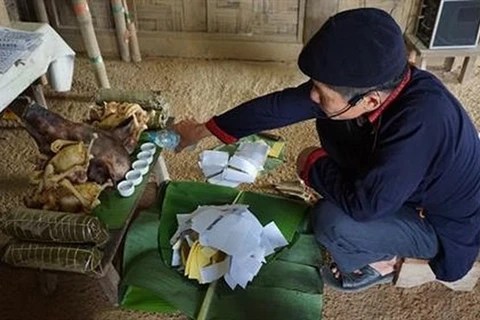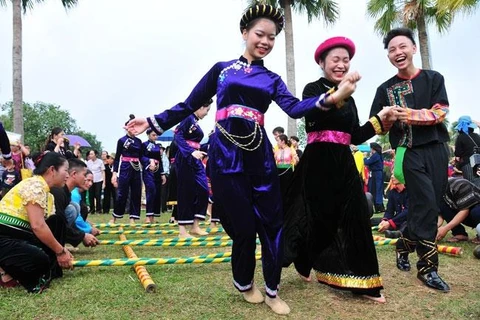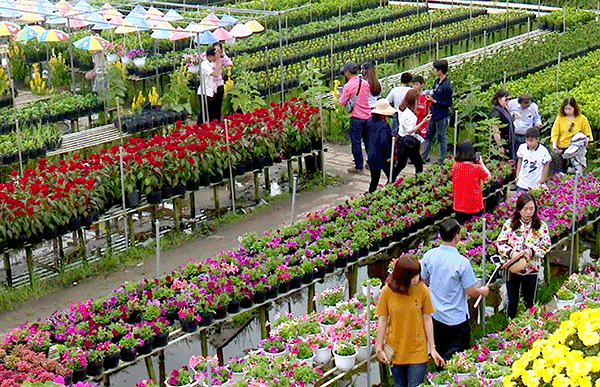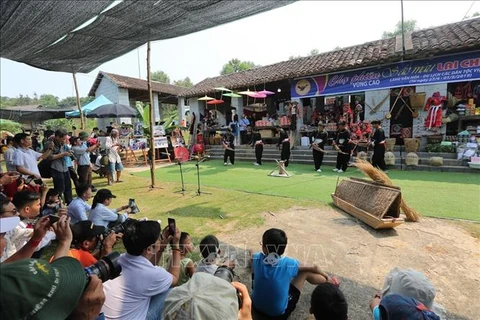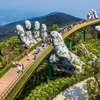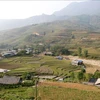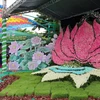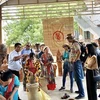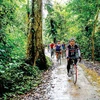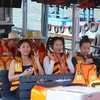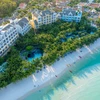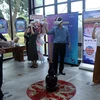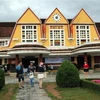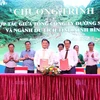 Visitors to the village will have a chance to join dances of ethnic minority groups. (Photo: Vinaculto)
Visitors to the village will have a chance to join dances of ethnic minority groups. (Photo: Vinaculto) Hanoi (VNA) – The Vietnam National Village for Ethnic Culture and Tourism will reopen in July after a period of closure due to complicated developments of the COVID-19 pandemic.
Visitors to the village from July 1-31 can experience daily activities of Vietnamese ethnic minorities, including traditional craft demonstrations, culinary introductions, folk games and dances.
According to Trinh Ngoc Chung, acting head of the management board of the Vietnam National Villages for Ethnic Culture and Tourism, the highlight of the activities in July is the 'Rural Market-Children's Memory' event that will take place from July 23-25.
“The space of the rural markets will recreate ancient cultural features, taking visitors on a journey back to a humble and rustic memory via trading scenes, folk games and dances that are typical of northern Vietnam,” he said.
A path shaded with bamboo arches and conical hats will lead tourists to the rural market. About 15 booths equipped with bamboo tables and chairs will offer a variety of specialities of the North like rice paper, rice cakes, peanut candies, boiled maze and banh cuon (steamed rolls made of rice flour).
Other traditional items are also sold at the market like traditional toys and craft products. The organising board has also invited 20 ethnic artisans to introduce and make traditional handicrafts.
An integral part of the 'Rural Market-Children's Memory' event is an abundance of folk games inviting tourists to take part in, such as rope jumping, tug of war and stilts walking.
Chung said the management board of the village is still making great efforts to introduce and recreate the rituals of 54 ethnic groups in Vietnam through a variety of activities.
For example, traditional rituals of the Khmer and E De ethnic minorities will be held in the village on July 25 and 31, respectively.
“We have prepared two scenarios for the activities of the village in July. In case the situation of the COVID-19 pandemic becomes complicated, the activities will take place on an appropriate scale and if the pandemic is under control and there are specific directions from authorities, all the events will be organised according to plan,” he added.
About 100 people from 13 ethnic groups are expected to be present at the activities of the Vietnam National Villages for Ethnic Culture and Tourism this July, including Tay, Nung, Dao, Mong, Kho Mu, Muong, Thai, Ta Oi, Co Tu, Ba Na, Xo Dang, E De and Khmer.
Vietnam is home to 54 ethnic groups, each of which has its own unique cultural identity. At the Vietnam National Village for Ethnic Culture and Tourism, ethnic minority people join State agencies and experts in preserving and introducing their communities’ cultural values to visitors.
The village, located in Dong Mo tourism area in Hanoi’s Son Tay township, is described as a “common home” of the 54 ethnic groups across the nation. It has a total area of 1,544ha with seven functional zones. Among them, the zone for ethnic minority villages is considered the heart of the culture-tourism village.
So far, people from 13 ethnic groups have come from every corner of the country to reside here, including Tay, Dao, Muong, Thai, Kho Mu, Ta Oi, Co Tu and Khmer.
Thanks to them, the culture of these groups has been demonstrated through not only their traditional houses or places of worship, but also the daily activities and festivals held by ethnic minorities in the village.
In 2018, more than 560 ethnic minority people from 39 localities along with 14 groups of ethnic communities from the northwestern, Central Highlands and southwestern regions recreated 22 traditional festivals at the village. The participation of nearly 500 theatre artists contributed to creating a picture of cultural diversity at the “common cultural house./.


